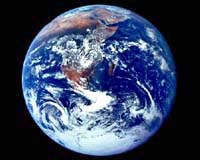
 |
While rain levels have remained pretty steady for the past few years, changes in land use, especially deforestation and urbanisation, that go hand in hand with economic growth have led to worse flooding, they say.
"Floods are as much man-made as they are natural disasters," said Hong Kong Chinese University geography professor David Chen.
"There is a gap between economic development and provisions for coping with the resulting impact it is having on the environment -- and floods are one of the outcomes."
The main cause of flooding is rain run-off. While most rainfall is absorbed into the soil and lakes in rural areas, in concrete and stone-built towns and cities precipitation literally swills around with nowhere to go.
"It's all about permeability," said Hong Kong Baptist University meteorologist Kenneth Wong. "Rural areas are more permeable, because the soil absorbs water and holds it, whereas cities don't.
"If they don't have adequate storm run-off drainage, then flooding occurs."
Deforestation does much the same thing in rural areas, removing vital tree and shrub roots that help hold the water in the soil.
The worst floods this year have happened in the areas of greatest economic and urban expansion, China and India.
In China 381 people have died from rainfall-related disasters since the beginning of the year, with 98 people still missing and 45.7 million affected, according to the State Flood Control and Drought Relief Headquarters.
Last year floods in China claimed more than 1,900 lives by October and left millions homeless. The worst floods in recent years happened in 1998 when more than 4,000 people died.
The situation is now so bad that President Hu Jintao this week ordered flood control departments to make full preparations for more possible floods.
Meanwhile, in South Asia deaths continue to mount as monsoon rains cause floods in eastern India and in Bangladesh more than 11 million people of the country's 140 million have been affected by similar deluges.
A.K. Mitra, additional chief engineer of the Water Resources department of India's badly flooded northeastern Assam state said: "All facts and figures from various departments show the flooding this year is among the worst in living memory.
"It is the worst since the devastating floods following the great Indian earthquake in 1950," Mitra said.
"I have been in the department working in various capacities for the past 30 years and even my professional experience says this is one of the worst floods."
The death toll since the Monsoon rains began mid-June across South Asia stands at around 451, according to a tally by AFP based on figures announced by officials. Media reports suggest the toll could be much higher.
The greatest number of casualties have been from India, where at least 277 people have been killed, mainly in the eastern state of Bihar and northeastern Assam.
The toll in Bangladesh stands at 69, in Nepal at 86, in Afghanistan at 16 and in Bhutan at three.
In Hong Kong analysts studying the region's weather patterns say the Monsoon weather system that buckets rain onto the region between May and September has displayed no unusual characteristics this year leading them to discount global warming or any other climatic anomaly as causes of the floods.
"The Monsoon's intensity can very from year to year by as much as half of its average," said Chinese University's Chen. "This year's Monsoon has been a little late in coming but is so far no more intense than expected."
But with some cities, like Shenzhen in southern China, trebling in size in just 15 years according to Wong, the pace of urban development is likely to exacerbate the problem for future.
"Much more has to be done in terms of flood prevention in the newly emerging and growing cities," said Chen, "or else floods like this year's will become quite normal."
TERRA.WIRE |